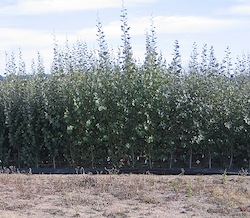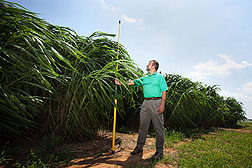Researchers at Oregon State University recently published results of a study looking at the advantages of growth traits of “semi-dwarf” trees. Through genetic modification, advantageous growth traits could be developed to grow trees better suited for bioenergy or more efficient water use in a drier, future climate.
According to the research team, this approach is contrary to the conventional wisdom of tree breeding which operates under the philosophy that larger and taller is better. Yet similar to how the green revolution in agriculture helped crops such as wheat and rice produce more food on smaller, sturdier plants, this same strategy could be successfully applied to forestry.
 “Research now makes it clear that genetic modification of height growth is achievable,” said Steven Strauss, an OSU professor of forest genetics. “We understand the genes and hormones that control growth not only in crop plants, but also in trees. They are largely the same.”
“Research now makes it clear that genetic modification of height growth is achievable,” said Steven Strauss, an OSU professor of forest genetics. “We understand the genes and hormones that control growth not only in crop plants, but also in trees. They are largely the same.”
In a study published in Plant Physiology, researchers inserted a several genes into poplar trees, a species often used for genetic experiments, and valuable for wood, environmental and energy purposes. The report details 29 genetic traits that were affected, including growth rate, biomass production, branching, water-use efficiency, and root structure. All of the changes were from modified gibberellins, plant hormones that influence several aspects of growth and development.
The researchers found that the range and variation in genetic modification can be accurately observed and selected for, based on hormone and gene expression levels, to allow production of trees of almost any height. Other genes could be modified to produce trees with a larger root mass that could make them more drought resistant, increase water efficiency, increase elimination of soil toxins, and better sequester carbon. This could be useful for greenhouse gas mitigation, bioremediation or erosion control.
Although researchers can already point to beneficial results of genetic modification of poplar trees, and eventually other trees, it may be difficult to actually use the research for the greater good.
“The main limitation is the onerous regulatory structure for genetically-modified plants in the United States,” Strauss said. “Even short, safe and beneficial trees are unlikely to be able to bear the high costs and red tape inherent to obtaining regulatory approval.”
 Here is a sampling of the some of the sessions you’ll not want to miss.
Here is a sampling of the some of the sessions you’ll not want to miss.










